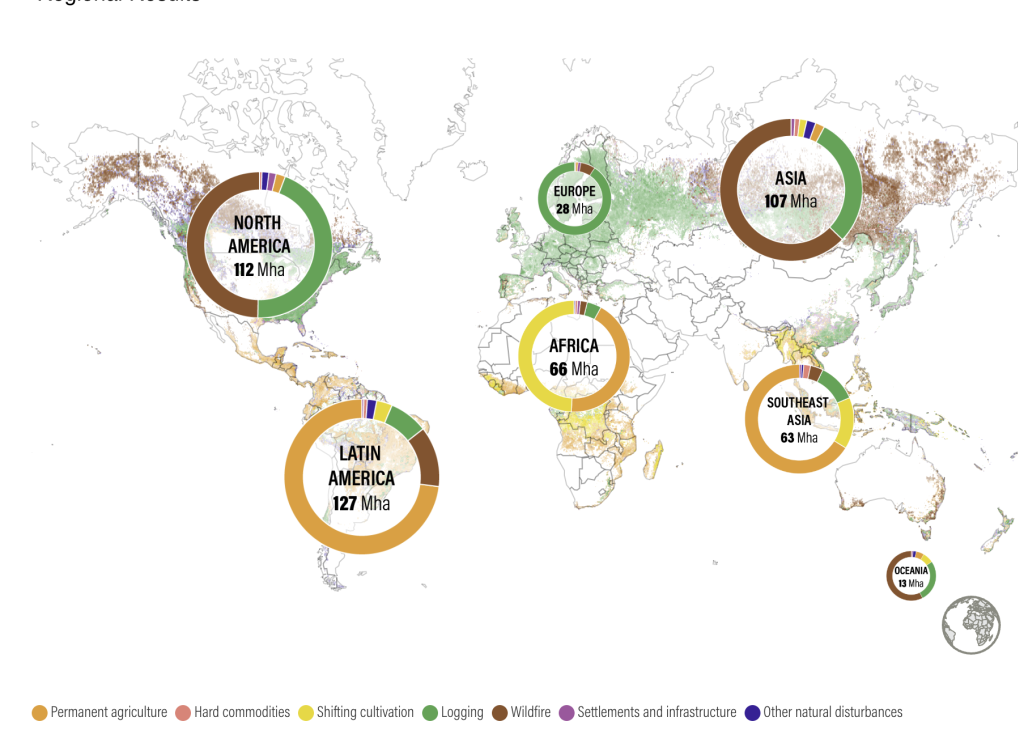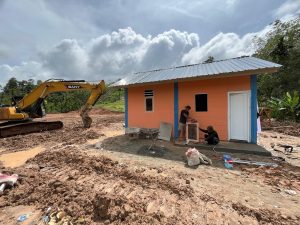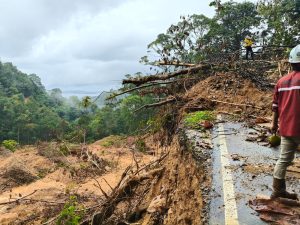Jakarta — New data released by the World Resources Institute (WRI) and Google DeepMind, on Thursday, June 12, has revealed that more than three-quarters of Indonesia’s tree cover loss over the past two decades was likely the result of deforestation — a permanent removal of forest for other land uses — placing the country among the most affected globally.
The data, now available on the Global Forest Watch platform, shows that between 2001 and 2024, Indonesia lost a staggering 32 million hectares (Mha) of tree cover, equivalent to a 20% decrease in tree cover since 2000, and 23.2 Gt of CO₂e emissions. Of this, 76% occurred in areas where the leading causes, such as commodity expansion and permanent agriculture, point to long-term forest conversion. In 2024 alone, Indonesia lost 259,000 hectares of natural forest, emitting an estimated 194 million metric tons of carbon dioxide into the atmosphere.
Permanent agriculture was identified as the leading cause, responsible for 23.4 Mha of tree cover loss during the 23-year period. The expansion of hard commodities, such as oil palm and pulpwood, accounted for another 716,000 hectares, while settlement and infrastructure development contributed 122,000 hectares of loss.
In contrast, temporary disturbances, such as selective logging (3.33 Mha), shifting cultivation (1.79 Mha), and wildfires (2.25 Mha), were also significant but do not necessarily lead to permanent deforestation, as forests may regenerate in those areas.
The regional breakdown reveals that just five provinces were responsible for 59% of Indonesia’s total loss of tree cover. Riau province tops the list with 4.3 Mha lost, followed closely by West Kalimantan (4.21 Mha), Central Kalimantan (3.86 Mha), South Sumatra (3.29 Mha), and East Kalimantan (3.13 Mha). These areas have historically been hotspots of industrial agriculture, logging, and peatland drainage, major contributors to Indonesia’s forest decline.

Globally, the report found that 34% of all tree cover loss from 2001 to 2024 was linked to permanent land use change. In tropical primary rainforests, such as those found in Indonesia, that figure rises to 61%, underscoring the urgent need for region-specific solutions.
Indonesia has made notable progress in reducing deforestation since its peak in the early 2010s, mainly through moratoriums on primary forest clearing, improved law enforcement, and more sustainable commodity supply chains. But the persistence of high-emission land use change highlights ongoing challenges.
With the spotlight once again on forest drivers, experts hope the new data will help shape more effective, locally informed strategies to preserve Indonesia’s remaining forests and meet its climate commitments. (nsh)
Banner photo: Rainforest jungle in Borneo, Malaysia, deforestation to make way for oil palm plantations (Jonathan Yee/shutterstock.com)














